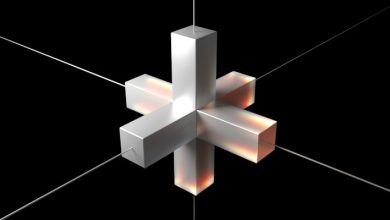What is a DApp? A Guide to Decentralized Applications

- Understanding the Basics of DApps
- Exploring the Benefits of Decentralized Applications
- How DApps are Revolutionizing the Tech Industry
- The Key Features of Decentralized Applications
- A Step-by-Step Guide to Building Your Own DApp
- The Future of DApps: Trends and Predictions
Understanding the Basics of DApps
Decentralized applications (DApps) are a type of software application that runs on a decentralized network of computers rather than a single server. This means that DApps are not controlled by any single entity, making them more resistant to censorship and downtime. Understanding the basics of DApps is essential for anyone looking to explore the world of decentralized technology.
One key feature of DApps is their use of blockchain technology. Blockchain is a distributed ledger that records transactions across a network of computers. This makes DApps transparent and secure, as all transactions are recorded on the blockchain and cannot be altered.
Another important aspect of DApps is their decentralized nature. This means that no single entity has control over the application, making them more resilient to censorship and hacking. Users interact directly with the application, rather than through a central authority.
DApps can be used for a wide range of applications, from finance and gaming to social networking and file storage. They offer a new way of building and using applications that is more open, transparent, and secure than traditional centralized applications.
In conclusion, understanding the basics of DApps is essential for anyone looking to explore the world of decentralized technology. By leveraging blockchain technology and decentralization, DApps offer a new way of building and using applications that is more transparent and secure than traditional centralized applications.
Exploring the Benefits of Decentralized Applications
Decentralized applications (DApps) offer a wide range of benefits compared to traditional centralized applications. One of the key advantages is the increased security that comes with decentralization. Since DApps are not controlled by a single entity, they are less vulnerable to hacking and data breaches. This makes them a more secure option for storing sensitive information and conducting transactions online.
Another benefit of DApps is their transparency. Because they are built on blockchain technology, all transactions and data stored on a DApp are visible to anyone on the network. This transparency helps to build trust among users and eliminates the need for intermediaries in many processes. Additionally, DApps are often open-source, meaning that their code is publicly available for anyone to view and contribute to, fostering collaboration and innovation within the community.
Furthermore, DApps are typically more resilient than centralized applications. Since they are not hosted on a single server, they are not as susceptible to downtime or server failures. This means that DApps can continue to function even if some nodes on the network go offline. As a result, DApps offer a more reliable user experience and are less likely to be disrupted by external factors.
In addition to their technical advantages, DApps also offer financial benefits to users. Because they do not require intermediaries to facilitate transactions, DApps can often be more cost-effective than traditional applications. Users can save on fees and avoid the markup that is typically charged by intermediaries. This can result in significant cost savings, particularly for businesses that rely on online transactions to operate.
Overall, the benefits of decentralized applications are clear. From increased security and transparency to improved resilience and cost-effectiveness, DApps offer a compelling alternative to traditional centralized applications. As the popularity of blockchain technology continues to grow, we can expect to see even more innovative DApps emerge in the future, providing new opportunities for users and businesses alike.
How DApps are Revolutionizing the Tech Industry
DApps are transforming the tech industry by offering a new way for users to interact with applications. These decentralized applications run on a blockchain network, which means they are not controlled by any single entity. This decentralization provides increased security, transparency, and immutability for users.
One of the key ways that DApps are revolutionizing the tech industry is through smart contracts. These self-executing contracts are stored on the blockchain and automatically enforce the terms of an agreement. This eliminates the need for intermediaries, streamlining processes and reducing costs.
Furthermore, DApps are enabling new business models to emerge. With the ability to create tokens and raise funds through initial coin offerings (ICOs), startups can access capital in a decentralized manner. This opens up opportunities for innovation and disruption in various industries.
The Key Features of Decentralized Applications
Decentralized applications, or DApps, have several key features that set them apart from traditional centralized applications. One of the main characteristics of DApps is their use of blockchain technology, which ensures transparency and security through a decentralized network of nodes. This means that no single entity has control over the application, making it resistant to censorship and tampering.
Another important feature of DApps is their open-source nature, allowing anyone to view and contribute to the code. This fosters innovation and collaboration within the community, leading to continuous improvement and development of the application. Additionally, DApps often use smart contracts, which are self-executing contracts with the terms of the agreement directly written into code.
Furthermore, DApps are designed to be autonomous and self-sustaining, with built-in mechanisms for governance and decision-making. This means that users have a say in the direction of the application and can vote on proposals or changes. By empowering users and removing intermediaries, DApps aim to create a more democratic and inclusive ecosystem.
Overall, the key features of decentralized applications make them a promising alternative to traditional centralized applications. With their focus on transparency, security, open-source collaboration, and user empowerment, DApps have the potential to revolutionize the way we interact with technology and the internet.
A Step-by-Step Guide to Building Your Own DApp
Building your own DApp can seem like a daunting task, but with the right guidance, it can be a rewarding experience. Here is a step-by-step guide to help you get started:
- Define your idea: Begin by clearly defining the purpose and functionality of your DApp. What problem will it solve? Who is your target audience? Having a clear vision will guide you through the development process.
- Choose a blockchain platform: Select a blockchain platform that aligns with your project requirements. Popular choices include Ethereum, EOS, and Tron. Consider factors such as scalability, security, and community support.
- Design the user interface: Create a user-friendly interface that allows users to interact with your DApp seamlessly. Consider the overall user experience and design elements that will make your DApp stand out.
- Develop the smart contracts: Smart contracts are the backbone of any DApp. Write and deploy smart contracts that define the rules and logic of your application. Ensure that they are secure and efficient.
- Test thoroughly: Before launching your DApp, conduct thorough testing to identify and fix any bugs or vulnerabilities. Test the functionality, security, and performance of your DApp to ensure a smooth user experience.
- Deploy your DApp: Once you are satisfied with the testing results, deploy your DApp on the blockchain platform of your choice. Make sure to follow the deployment guidelines provided by the platform.
- Market your DApp: Promote your DApp to your target audience through various channels such as social media, forums, and online communities. Engage with users and gather feedback to improve your DApp continuously.
- Maintain and update: Regularly maintain and update your DApp to keep it running smoothly and to incorporate new features or improvements. Stay informed about the latest trends and developments in the blockchain space.
The Future of DApps: Trends and Predictions
The future of decentralized applications (DApps) is filled with exciting trends and predictions. As blockchain technology continues to evolve and gain mainstream adoption, DApps are expected to play a significant role in shaping the digital landscape. One trend that is likely to dominate the DApp space is the integration of artificial intelligence (AI) and machine learning algorithms. These technologies can enhance the functionality of DApps by enabling them to make autonomous decisions and provide personalized user experiences.
Another key trend to watch out for is the rise of cross-chain interoperability. This will allow DApps to operate seamlessly across different blockchain networks, opening up new possibilities for collaboration and innovation. Additionally, the development of more user-friendly interfaces and better scalability solutions will make DApps more accessible to a wider audience, fueling their growth and adoption.
Looking ahead, it is predicted that decentralized finance (DeFi) will continue to be a driving force behind the expansion of DApps. DeFi applications have already demonstrated the potential to revolutionize traditional financial services, and as more DApps leverage DeFi protocols, we can expect to see a surge in innovative decentralized solutions for banking, lending, and trading.
In conclusion, the future of DApps is bright and full of possibilities. By embracing emerging technologies, improving interoperability, and focusing on user experience, DApps are poised to become a cornerstone of the decentralized web. As the DApp ecosystem continues to evolve, we can expect to see a wave of new applications that will transform industries and empower users in ways we have yet to imagine.



